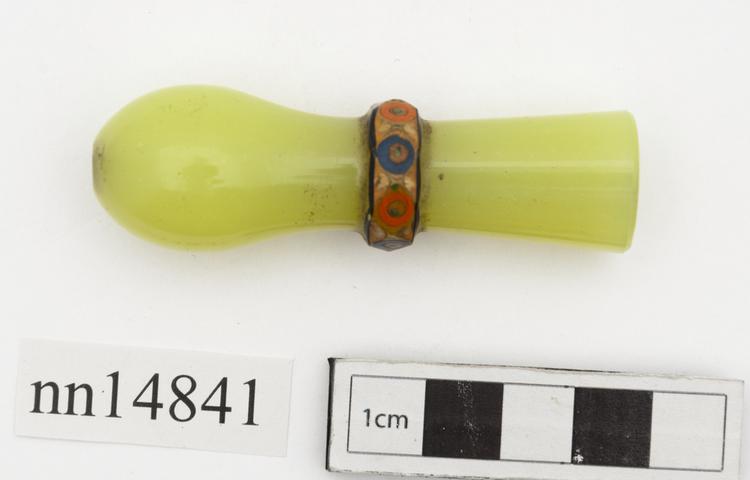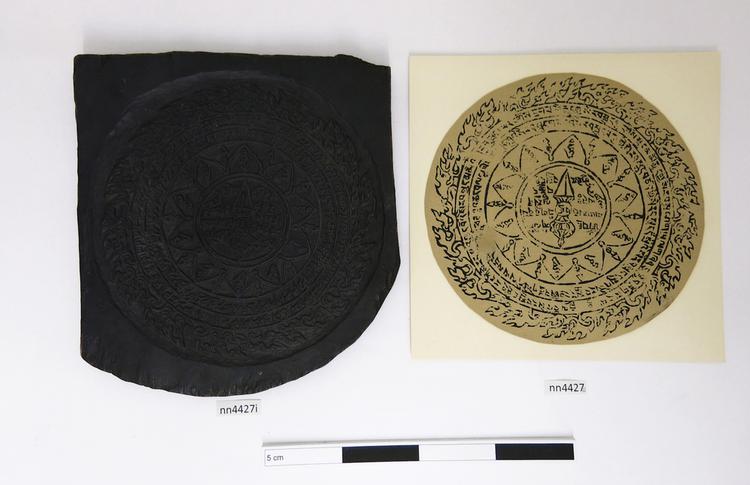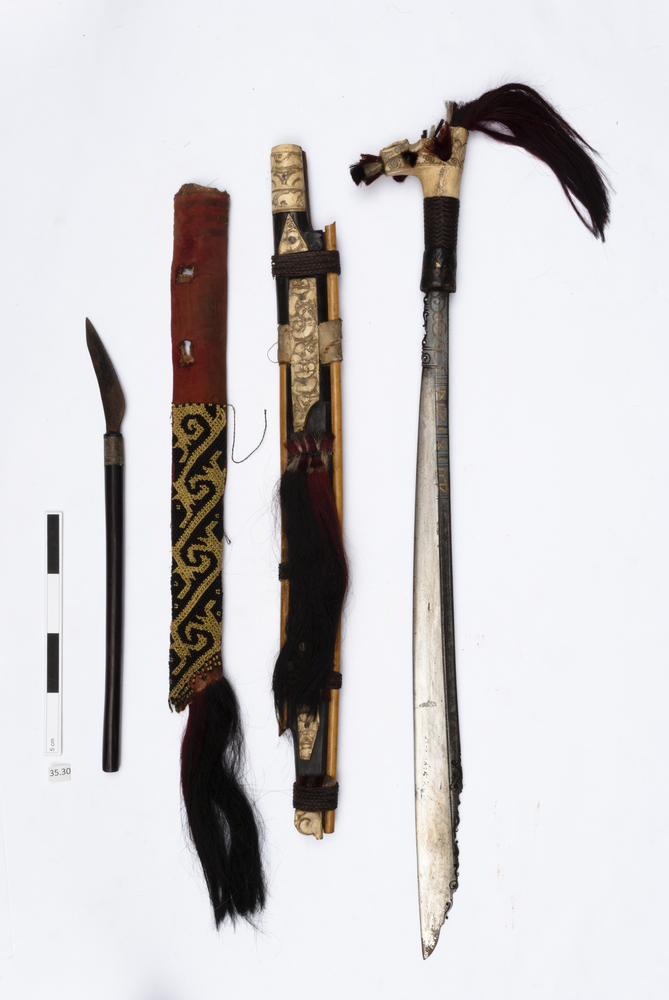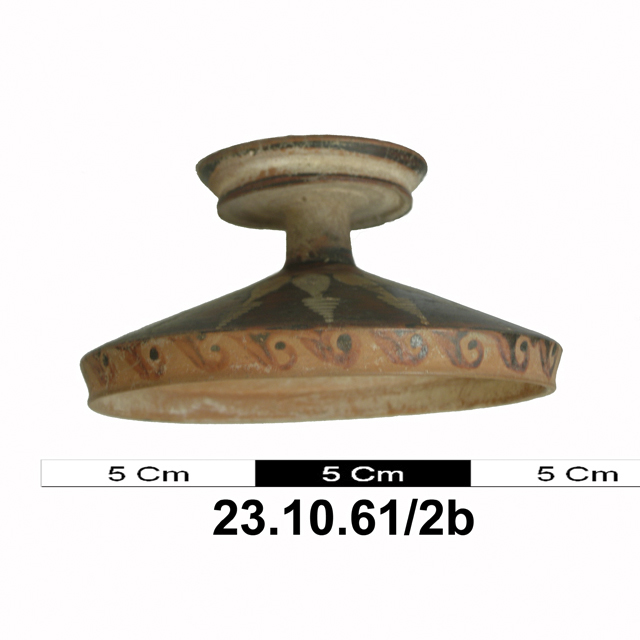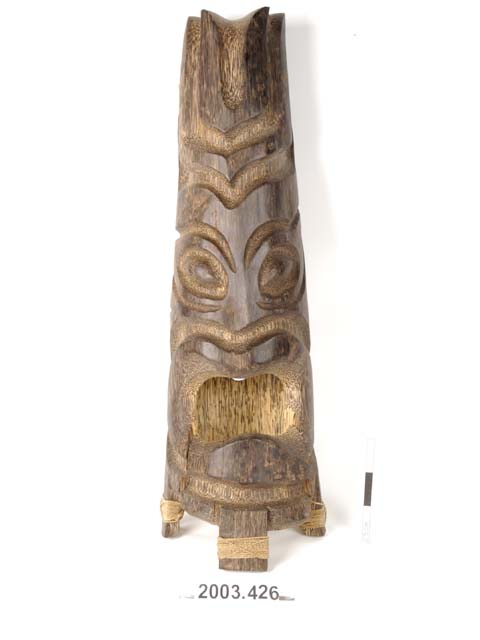
'Roaring Potaro' - a piece by Oswald Hussein made from palm wood. The carving depicts the myth of the great Kaietur Falls, which come from one of the main Guyana rivers, the Potaro. The Potaro, according to Oswald, is the husband of the Kaietur Falls. The sculpture connects the Potaro and the Kaietur to form one big spiritual space. It also resonates the myth of the great kanaima or spirit that went down the great falls in his canoe. The upper part of the carving mouth represents the reeds that surround the mouth of the Kaietur. The wide mouth represents the roar of the river, whilst the lower parts or feet with strings attached to them represent the anchoring of the great falls to the earth. A sculpture made from a wood which is darker outside and lighter inside, with a strong dark grain running vertically. The carving is a thick, hollow tube tapered to a slightly narrower top end. The bottom end forms three points or feet on which the sculpture stands, each with grass or plant fibres wrapped around it. One side is a face with a wide, open mouth; the other side has staring eyes and the curved fangs of a snake.



